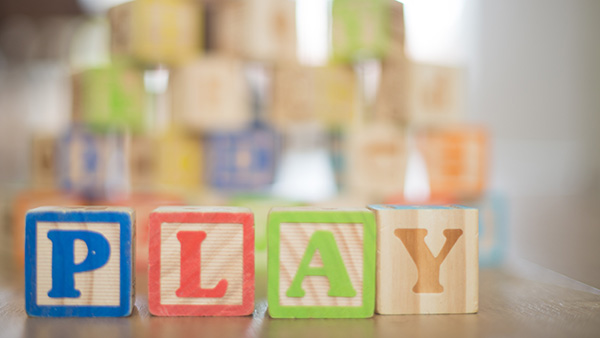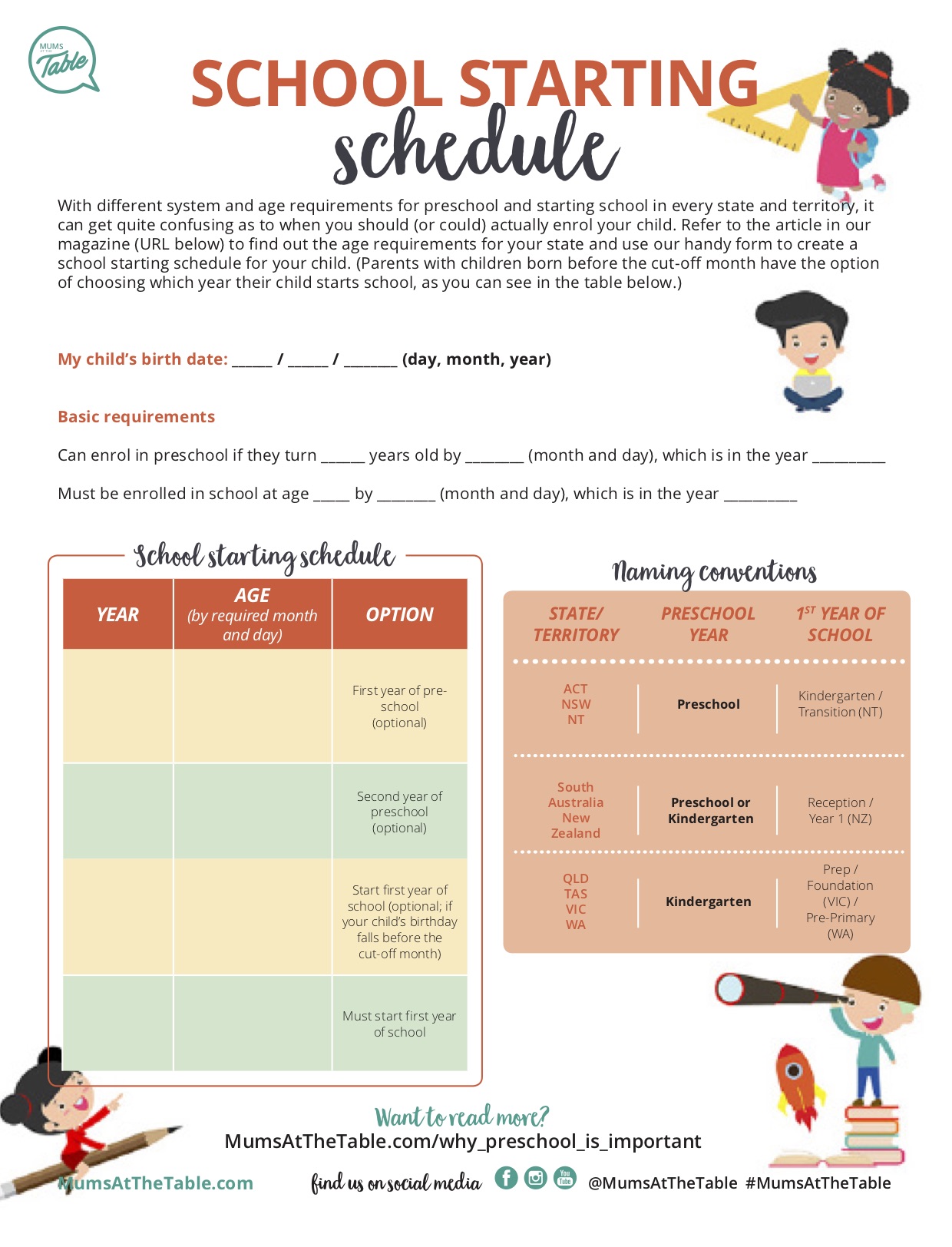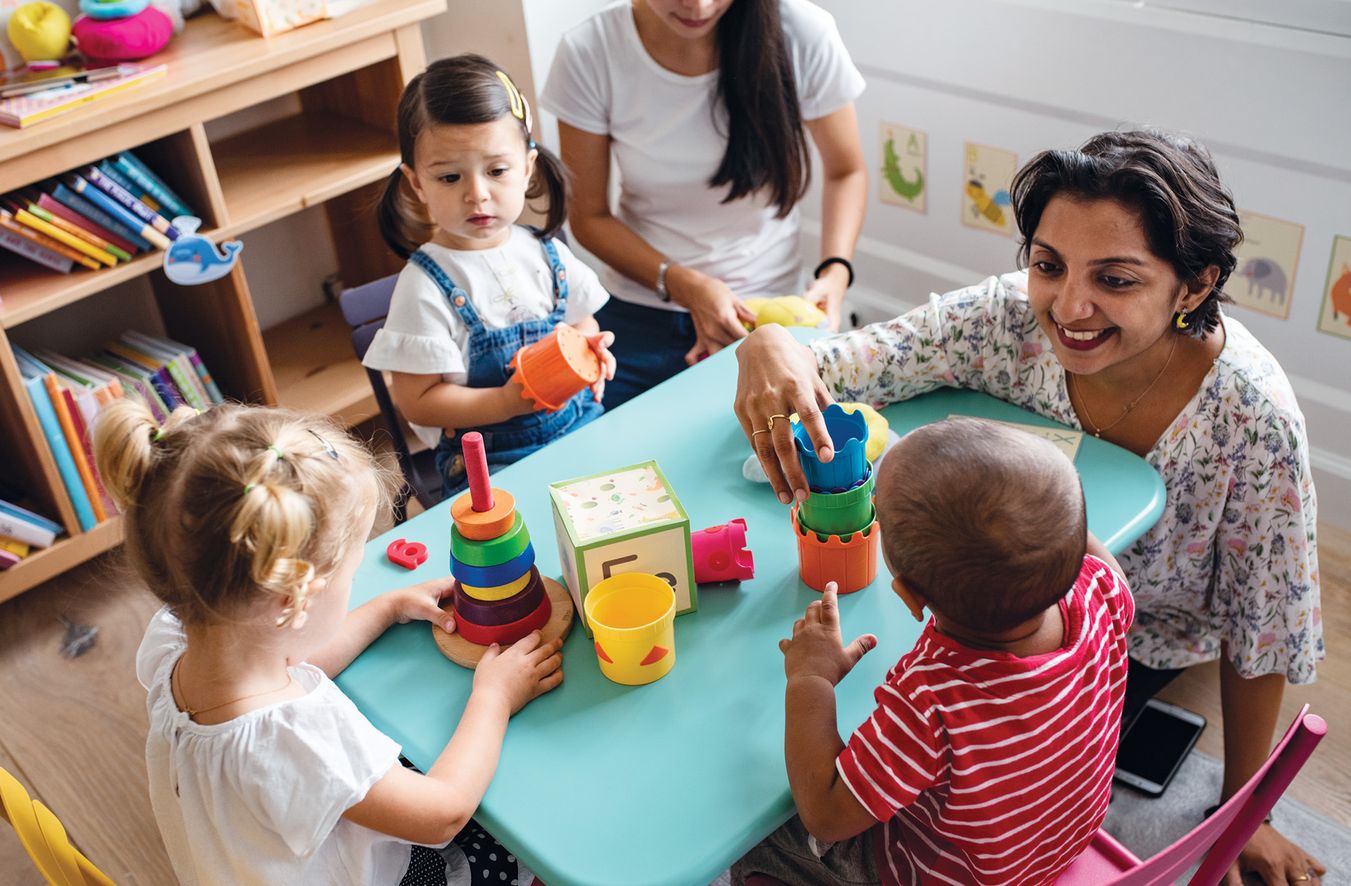Early learning services such as preschool can be one of the best things parents can do to support their child’s development. Here’s why. (And read to the end for a free “School starting schedule” printable.)
Australia has seen a massive increase in enrolment in preschool programs over the past 10 years, making a significant difference to the country’s children and families.
A nurturing home environment is important for young children, who are learning and processing information from the moment they’re born. Having parents who play, read and talk with them daily lays the foundation for children’s wellbeing and brain development. In addition to this, one of the best things parents can do to support their child’s development is to get them into a quality play-based early learning service. (This could be called preschool or kindergarten, depending on which state you live in. See table “Navigating preschool and first year of school across Australia” below.)
The benefits of sending children to preschool

Quality early learning amplifies the skills children are already learning at home, in a socially stimulating and supportive environment. The benefits of sending children to preschool include improvements in:
- social skills
- confidence
- emotional capacity
- thinking
- speaking
- listening skills
Parents also commented on their children’s engagement in creative projects and benefitting from building relationships with children and educators.
(Based on the responses of 90 percent of the 3000 parents in a 2017 Early Childhood Australia survey.)
The evidence for the benefits of children participating in two years of preschool is also outlined in the Mitchell Institute’s report, Preschool—Two Years are Better Than One. It documents UK and US studies that found students who attended two or more years of preschool:
- Obtained higher total final exam scores, better grades in English and in maths and took more final year exams.
- Improved Grade 4 learning results.
- Higher scores in international test results at age 15 than those who attended no preschool or only attended for one year.
Relevant: How to know when your child is ready for school—and no, it doesn’t include reading
Erica Gardner from Victoria describes how her daughter’s early childhood educators helped her to recognise and manage her emotions: “One of her educators showed her a breathing technique, one big breath in and then a long slow breath out, repeated a few times, that is useful when she is feeling frustrated or angry. I’ve tried to do this at home with her and used it myself. I’ve even heard her muttering to herself about needing to breathe when she is feeling angry with her brother.”
A Queensland mother says she noticed her son’s concentration and attention span had really improved since he started preschool: “Now, when it’s time to read at night, he’ll go and find something he wants to read, and ask us to read it. He sometimes even has a book under his pillow. I really like the way they encourage the kids to take responsibility at the preschool, like putting their drink bottles away. I’m impressed with how organised everything is and how welcoming.”
How to choose a good preschool
It is a great achievement that 95 per cent of children in Australia are now enrolled in a preschool program (up from 12 per cent in 2008), whether that’s in a standalone preschool or kindy, as part of a long day care centre or in a school-based preschool.
Starting a preschool program however, is not the same as going to school. Quality early education involves play-based learning in an age-appropriate curriculum.
As Early Childhood lecturers at Deakin University, Anne-Marie Morrissey, Natalie Robertson and Elizabeth Rouse write, play-based learning “enables the child to engage in the flexible and higher-level thinking processes, including problem solving, analysing, evaluating, applying knowledge and creativity”.
Their article, “Play-based learning can set your child up for success at school and beyond,” published in The Conversation, says that play supports positive attitudes to learning, such as imagination, curiosity, enthusiasm and persistence. The type of learning processes and skills fostered in play cannot be replicated through rote learning, where there is an emphasis on remembering facts.
They quote research studies that show children engaged in play-based programs use more complex language processes and have improved literacy skills: “These include understanding the structure of words and the meanings of words. Another study found children’s vocabulary and ability to tell a story was higher in a play-based classroom than a traditional classroom.”
Erica explains how play-based learning improves problem-solving skills and cognitive development: “My daughter and three of her friends built a castle together. The educators assisted them with resources and advice [such as how to spell words when they wanted to label different parts of the castle (literacy)] but ultimately they built it because they wanted to.
“The children had to build turrets and a drawbridge (numeracy), plan and negotiate who was doing what task and share one castle between the four of them (social-emotional). Play usually provides children with pleasure and interest that is maintained without external rewards. In learning through play, children associate learning with a process that is self-motivated.”
Preschool or early learning services in Australia

A challenge for Australian parents is that every state and territory has a different system with differing age requirements for preschool and starting school, and even different names. In ACT, Northern Territory and New South Wales, the year before starting school is called preschool, but in all the other states it’s called kindergarten. This is particularly confusing as in ACT, NSW and Western Australia, the first year of primary school is called kindergarten. (See table “Navigating preschool and first year of school across Australia” below).
The cost and availability of preschool programs varies widely across Australia. In ACT, South Australia, Western Australia, the Northern Territory and Tasmania, preschool programs are often delivered via the school system and are free. In Queensland, Victoria and NSW, preschool programs are delivered through standalone kindergartens or preschools, or in long day care centres and require fees to be paid. Where programs are delivered through long day care centres, they are generally also subsidised by the Commonwealth via the Child Care Subsidy scheme.
The NSW and Victorian governments have made commitments to reduce preschool costs for parents, but there is still a long way to go before access to preschool reaches the same levels as in the other states and territories.
When should you send your kids to preschool?
Early childhood educators, researchers and advocacy organisations such as Early Childhood Australia all agree it would be beneficial for Commonwealth funding to be extended to support preschool enrolment for all children for two years before they start school. The 2017 landmark Lifting Our Game report recommended extending the funding for universal access to preschool programs to include three-year-olds as “the single most impactful reform Australia could undertake, with international comparisons highlighting it as the biggest gap in the current system”.
Australia lags way behind other developed countries on the participation of three-year-olds in early education. With only 62.5 per cent of three-year-old children attending some form of early education, Australia is in the bottom third of countries rated by the OECD (Organisation for Economic Cooperation and Development). The top 10 countries have 95–100 per cent of three-year-olds in preschool education.
When children participate in high quality early education, there are far-reaching benefits, not just for them, but for the whole community. A 2015 study by the UK’s Department of Education found that these children are more likely to complete Year 12 and are less likely to repeat grades or require additional support, while another study linked high-quality early childhood education with higher levels of employment, income and financial security, improved health outcomes and reduced crime.
Parents can feel reassured that sending their child to quality early learning for a year or more before starting school is a great way for them to get the best start in life.
Navigating preschool and first year of school across Australia
State/Territory |
Preschool year |
Age |
First year of school |
School starting age |
ACT |
Preschool in primary schools (no fee) or long day care centre |
Can enrol your child in preschool if they turn four years old by April 30 |
Kindergarten |
Must be five years old by April 30 in the year they start kindergarten. It is compulsory for children to be enrolled in school from age six |
NT |
Preschool in government-run primary schools; no fee |
Can enrol your child in preschool (or kindergarten) from the age of four |
Transition |
Can start Transition if they turn five by June 30 in the year they are enrolled. Compulsory schooling begins with Year 1 when children must be enrolled in the year they will turn six by June 30 |
NSW |
Preschool in standalone community preschools or long day care centres; fees |
Can enrol your child if they turn four before August 1 in the year before starting school |
Kindergarten |
Children can start kindergarten at the beginning of the school year if they turn five on or before July 31 that year. By law, all children must be in compulsory schooling by their sixth birthday |
QLD |
Kindergarten in standalone or long day care centres, usually in or near a school |
Can enrol your child if they turn four by June 30 in the year before starting school |
Prep |
Compulsory to undertake Prep prior to Year 1. Children must be five by June 30 in the year they enrol. Children attend Prep from Monday to Friday, generally from 9 am to 3 pm. |
SA |
Preschool or Kindergarten mostly government-run, can be community or private standalone services or in schools or with other early learning services; no fees or voluntary contribution |
Can enrol your child if they turn four before May 1 in the year before starting school |
Reception |
If the child turns five before May 1 they will start school on the first day of term one in that year. If they turn five on or after May 1, they will start school on the first day of term one the following year. Children must enrol at school by six years |
TAS |
Kindergarten in government-run primary schools; no fee |
If your child is four years old on January 1, they can go to kindergarten that year |
Prep |
Prep is compulsory for all children who turn five on or by January 1 that year |
VIC |
Kindergarten mostly standalone centres; fees |
Can enrol your child if they are turning four before or on April 30 in the year before starting school |
Prep / |
To start primary school your child will need to turn five years old by April 30 in the year that they start school. Your child must be at school in the year that they turn six years of age |
WA |
Kindergarten in government-run primary schools and standalone centres; no fee |
You can enrol your child in kindergarten if they turn four years old by June 30 that year |
Pre-Primary |
Enrol in compulsory pre-primary when your child turns five years old by June 30 that year |
Find out more about preschools and starting school in New Zealand here.
Free printable: School starting schedule

How helpful was this article?
Click on a star to rate it!
0 / 5. 0
Be the first to rate this post!
Samantha Page
Related posts
Subscribe
Receive personalised articles from experts and wellness inspiration weekly!

